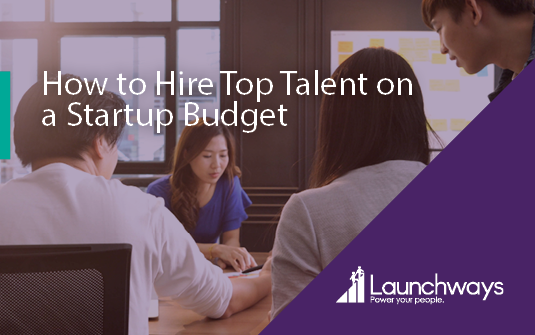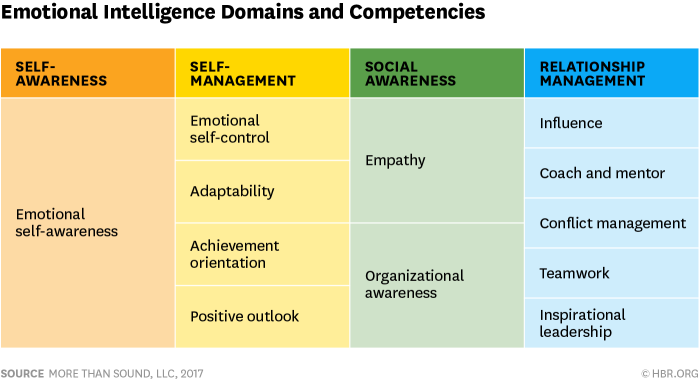With the unemployment rate at 4%, we’re experiencing a candidate-driven job market. It’s become increasingly challenging for growing businesses to attract the attention of top talent. As such, creating an attractive employer brand is more important now than ever before. Research by Glassdoor indicates that 69% of active job seekers are likely to apply to a job if the employer has a strong, positive employer brand.
For many growing businesses, employer branding may not be a top priority. But, it’s important to remember that your employees are your business’ number one resource. Your ability to attract and retain high-performers has a big impact on your bottomline. On top of this, a strong employer brand can reduce the high costs associated with recruiting and hiring by bringing more organic interest to your job openings. In fact, companies with strong employer brands enjoy 28% lower turnover rates, which presents an enormous cost-savings.
Many business owners have the misconception that you need huge name recognition and a large budget to build an employer brand. However, small fast-growing businesses have several advantages when it comes to employer branding. As a growing business, you’re more agile and flexible, so you can get more inventive with your employer branding tactics. Additionally, it’s important to remember you don’t need a large budget (or any budget) to get started with employer branding today.
In today’s post I’ll explore what it means to have a strong employer brand and how to use several no-to-low cost employer branding strategies including:
- Improving your website career page
- Leveraging social media
- Taking a more strategic approach to your employee benefits package
- Developing a more thoughtful hiring and onboarding process
By the time you’re done with this post you’ll walk away with a strong understanding of the building blocks that make up employer branding and a plan for several actionable tactics to begin improving your employer brand without increasing your budget.
What is an employer brand?
Your employer brand is your reputation as an employer and the value proposition you provide your employees. Your company mission, team, culture, and values make up your employer brand. An effective employer brand positions your company as a great place to work, which results in attracting and retaining top talent. Typically, the responsibility of the employer brand falls into the realm of HR, internal communications, and marketing. However, senior leadership plays a key role in shaping the employer brand.
As Jeff Bezos said, “Your brand is what people say about you when you’re not in the room.” In this sense, your employer brand is very similar. It’s what your employees say about your company when their friends ask what it’s like working there. It’s a culmination of everything being said about your company including:
- Employer review sites
- Word of mouth
- Press
Why is your employer brand important?
Investing in your employer brand presents several benefits including:
- Attracting top talent
- Developing a better sense of camaraderie in your team
- Improving your customer’s perception of your brand
- Increased application rates, resulting in a wide pool of talent to choose from
- Making your company stand out in a crowded candidate-driven job market
- Differentiate your company from competitors
The graph below demonstrates how prioritizing employer branding is becoming increasingly important for CEOs of growing businesses.

Managing Your Employer Brand Online
In this section I’ll outline all the places your employer brand lives online and provide some tips on how you can improve in each of these areas.
Social Media
Social media sites are not just for engaging with customers—they’re also key for building your employer brand. In today’s Millennial-dominant workforce, many job seekers will look at a company’s social media feeds prior to applying to get a feel for the company’s personality and culture. If you’re not leveraging social media to humanize your brand—you’re missing out on a key opportunity.
Some of the easiest ways to begin using social media to build your employer brand include sharing photos of your team or sharing updates about your team’s activities. For example, why not mention your recent happy hour celebration in a Tweet? Or if several of your teammates attend a local conference, make sure someone takes a photo and shares it on your company Facebook page.
When it comes to social media, make sure you’re leveraging the key platforms: Twitter, Facebook, and LinkedIn.
Career Sites
Career sites remain the top place job-seekers turn to discover new opportunities. You should be taking steps to manage and optimize your employer presence on these sites. The key players in this space include: LinkedIn, Glassdoor, CareerBuilder, and Indeed. Most of these sites offer a free employer profile which allows you to upload your logo, company description, and overview of company culture. Make sure your profiles on these sites are complete and up-to-date.
These sites are crucial because they allow employees to leave candid reviews of their experiences with employers. These reviews carry an enormous influence on your employer brand, with research by Edelman indicating that job seekers trust feedback from employees over the word of a CEO. Ensure you are monitoring, managing, and addressing the feedback received on these key career sites.
Job Postings
You should be using active job postings as an opportunity to strength your employer brand. A good job posting goes beyond explaining the job parameters to “sell” your company to prospective applicants. Here are some key factors you can include in your job postings:
- Key company growth metrics/achievements
- Overview of employee benefits offered
- Why the company culture is unique
- Opportunities for career progression/growth with the company
Your Website’s Career Page
Your website’s career page is the central hub of your employer brand. It’s your chance to share, in-depth, the unique company culture you’ve created and what it affords potential applicants. First, you should make sure that you have dedicated space on your website for a robust career page. Next, you should strive to optimize this page. We’ll cover this process more in-depth in the next section.
As with any branding efforts, consistency is key. You must ensure that you’re presenting a consistent message and clear employer value proposition across these key digital channels.
Optimizing Your Website’s Career Page
Your website’s career page is your best channel to communicate and drive forward your employer brand. As mentioned, it’s essential to have dedicated space on your website for a careers page. Here are some key elements to include on your careers page:
- Key growth metrics/company achievements. If your company is experiencing significant growth year over year, highlight this on your career page. Similarly, if you’re on the Inc 5000 or have been highlighted in local press, these are great things to include too.
- Real employee stories. Highlight quotes from top-performing employees that have experienced significant career growth at your company.
- An overview of benefits you provide. Highlight, at a high level, all the value-adds you provide employees. These benefits can range anywhere from the “core” benefits you provide (health insurance, 401k, flexible hours, etc.) to add-ons (gourmet coffee, catered lunch on Fridays, monthly massages, etc.).
- Your company’s core values. Your values are the heart and soul of your employer brand. It’s how your employee experience your company and realize their fit at the organization. Highlight each of your core values and what each one means to your employees.
- Include real photos of your team. When it comes to your career page, generic stock photos won’t do. Make sure to include a few high-resolution photos of your team.
To give you some perspective, here are some examples of stellar career pages:
How to Leverage a Strategic Employee Benefits Package to Improve Your Employer Brand
The benefits you offer your team are core to your employer brand. If you haven’t taken the time to think about a strategy around employee benefits—you’re neglecting an opportunity to drive forward your employer brand. When it comes to benefits, you should aim to build a strategic benefits package that helps your organization become an employer of choice and attract top talent. Here’s a quick overview of the types of benefits you might opt to include in your plan:
Core Benefits
- Health insurance
- Vision
- Dental
- 401k
- Vacation/PTO
Cost-based Benefits
- Formal training
- Education stipend
- Student loan reimbursement
- Snacks
- Gourmet coffee
- Catered lunches
- Massages, yoga classes, gym discounts or other wellness activities
Low-to-No Cost Benefits
- Career pathing
- Flexible schedules
- Unlimited PTO plans
- Social events
- Time-off to volunteer
- Commuter benefits
- Summer hours
- Remote work
- Casual dress code
- Profit sharing programs
- Open door management
As you can see, no matter what your benefits budget is, there are several high-value benefits you can implement at a low cost. The key to any high-impact benefits program is to have a clear strategy around it. The best way to do this is to understand your workforce. The benefits you offer must be in-line with the benefits your employees (and job candidates) want from an employer.
Research shows Millennials will make up 75% of the workforce by 2025. This means it has become increasingly important to tailor your benefits package to the changing desires of the next generation of workers. Research by Gallup indicates that over 50% of Millenials rate opportunites for learning and development as extremely important when deciding to apply for a job. In this case, a company with a younger workforce might opt to bypass a 401k but instead offer extensive paid training opportunities.
If you tailor your benefits package to your ideal workforce, it becomes a useful tool in driving forward your employer brand.
Building a Thoughtful Recruiting and Onboarding Process
Many employers underestimate the importance of a job-seeker’s application experience in the overall perception of the employer brand. In reality, every interaction a candidate has with your company from job postings, to the application interface, to your follow-up, to the interview process, has a significant impact on their perception of your employer brand.
For example, a job posting may peak a candidate’s interest, but if the job application software you use is clunky or confusing, they may abandon it entirely. If a candidate reviews your career site, social media, and core values but then doesn’t experience a smooth, respectful interview process to match it—they will not realize your employer brand. If a new-hire spends their entire first day filling out paperwork, you’ve just lost an enormous opportunity to drive forward your employer brand.
For these reasons, it’s essential your hiring and onboarding process are inline with the employer brand you’re crafting. Here are some tips:
- Ensure your job application process is simple
- Document a timeline of how all applicants should be responded to and what information they should receive
- Craft an interview process that’s thoughtful, high-impact, and respectful to the candidate
- Ensure all interviewers are well-versed in the company’s core values and comprehensive benefits offerings
- Leverage new-hire onboarding technology that completes all necessary paperwork prior to your new team member’s first day—so you can start the relationship off on the right foot
- Consider implementing HR all-in-one technology which delivers a smooth user experience from application all the way through onboarding
Key Take-Aways
In today’s post we explored why it’s important to invest in your employer brand and discovered several low-cost strategies to do this. Here are some key take-aways:
- Your employer brand is a candidate’s perception of what it would be like to work at your company
- A strong employer brand can help you attract top talent, reduce hiring and turnover costs, and build a more effective workforce
- Your company mission, core values, and employee benefits are key to your employer brand
- Ensuring a positive, consistent message across online channels is important to a strong employer brand
- A strategic approach to employee benefits will help drive forward your employer brand
- A thoughtful hiring and onboarding process is key to the realization of your employer brand
How do you prioritize strengthening your employer brand? Did any of the tactics outlined in this post stand out to you? I’d love to hear your thoughts—just drop them in the comments box below!







